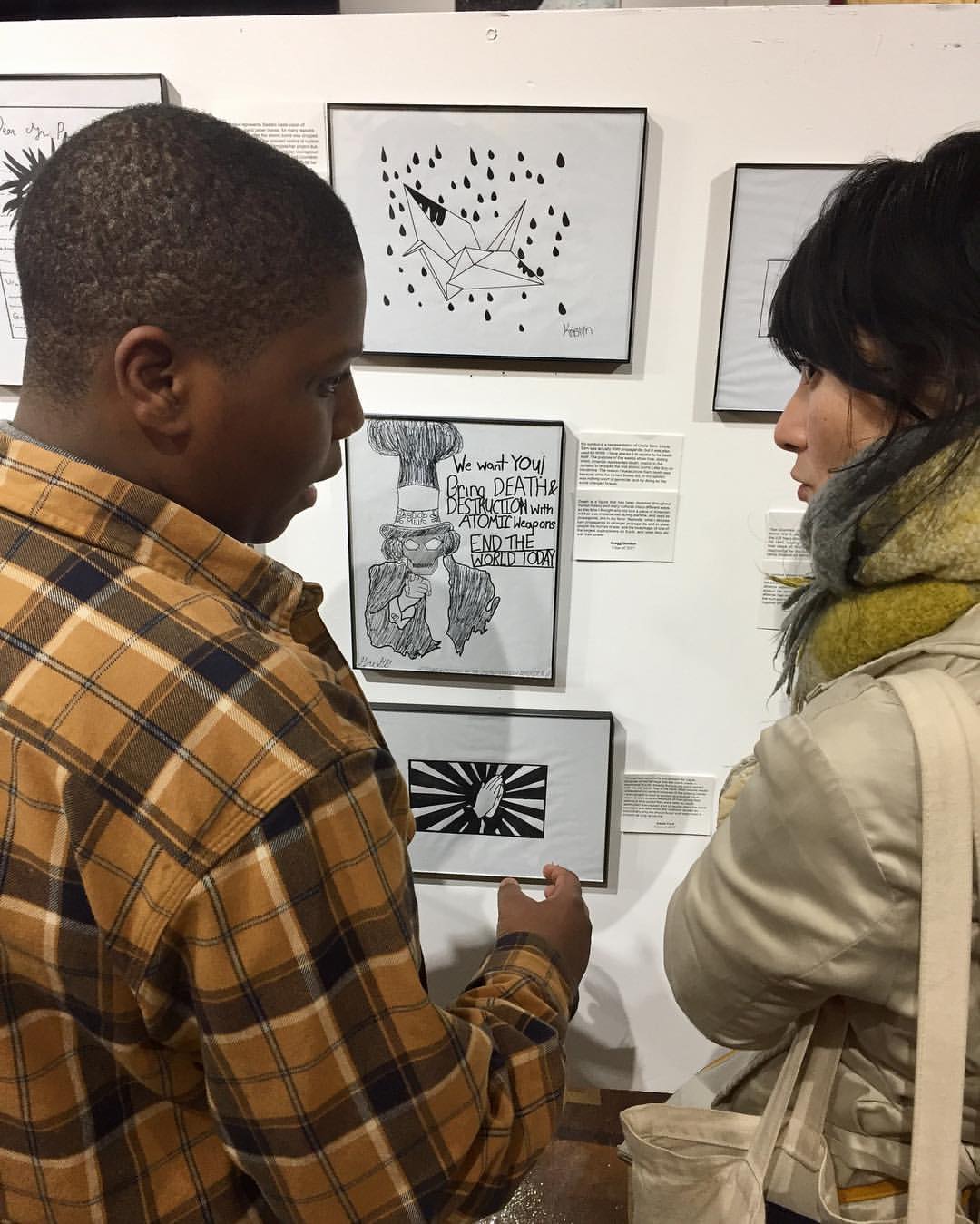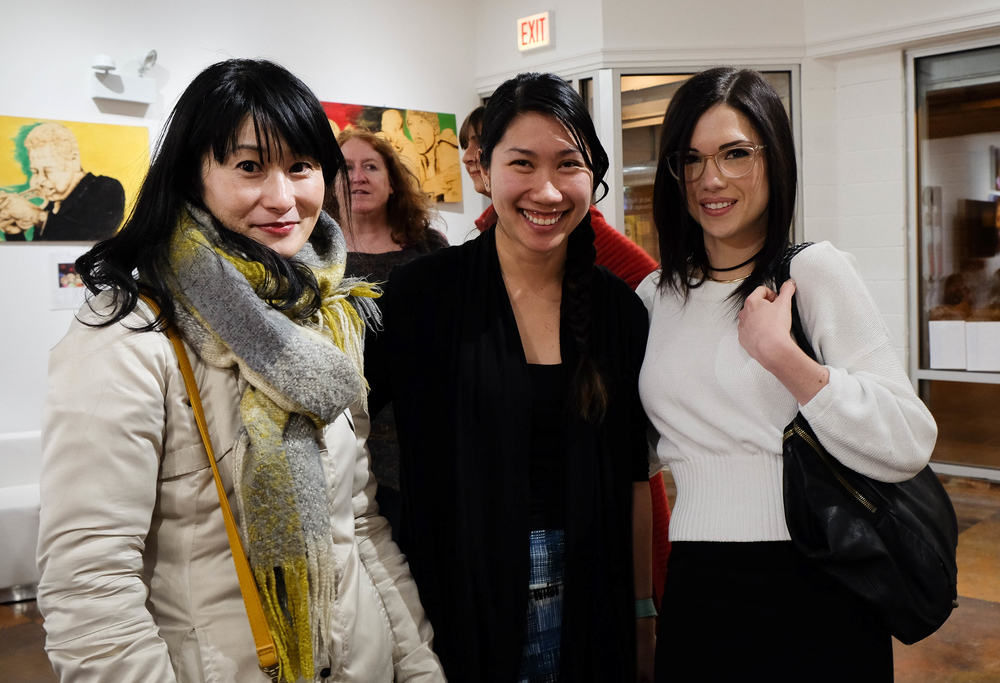Eighth-grade students from Chicago’s Polaris Charter Academy, led by teacher Carrie Moy, recently exhibited their atomic bomb themed artwork at 345 Art Gallery. Ms. Moy’s class spends the entire year studying the atomic bomb, and the class collaborated with the Japanese Culture Center in Chicago to express through art what they learned.

The art exhibit came about after the class visited the Center’s “Hiroshima-Nagasaki Atomic Bomb Exhibition,” which was held in October 2016 and used materials on loan from the Hiroshima Peace Memorial Museum and Nagasaki Atomic Bomb Museum. After a discussion with Japanese Culture Center Director Saira Chambers about Hiroshima-Nagasaki, the class decided to put on their own exhibition. Ms. Chambers visited their classroom and helped the students work through and express their ideas.
Gallery 345 is run by a Chicago police officer, who donated the space to the community to hold events. According to its website, the gallery is meant to be “a space to showcase art as a form of social engagement.”

The students received copies of “Paper Crane Journey” from ANT-Hiroshima during the gallery event. Ms. Chambers said the students were grateful for the books and happy to “know there were people listening to them far away.”
The Japanese Culture Center plans to collaborate with the class again for August 6 commemoration events, as well as continue working with Ms. Moy’s classes in future years.

DePaul University Professor Yuki Miyamoto also attended the exhibition. Professor Miyamoto teaches classes on the atomic bomb and takes a group of students on a study trip to Hiroshima and Nagasaki every other year. The humble writer of this blog met her when she brought her students to the UNITAR Hiroshima Office last December.

Ms. Chambers is passionate about sharing what she’s learned about Hiroshima, Nagasaki, and the atomic bomb. She said, “Chicago also has a deep history with the atomic bomb, and there is a community of dedicated advocates for knowledge and understanding of the topic here.” As the Center’s director, she supports “anyone who wishes to learn about this part of our collective past and how to make this a positive lesson for the future.”

